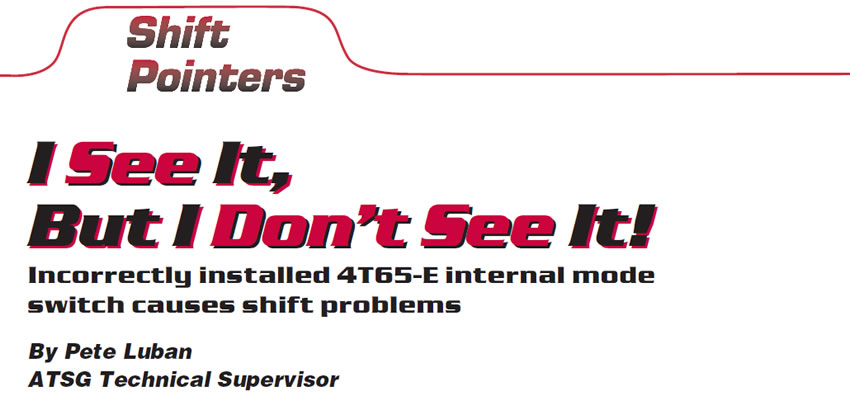
Shift Pointers
- Author: Pete Luban, ATSG Technical Supervisor
Incorrectly installed 4T65-E internal mode switch causes shift problems
I got a call from a technician who was working on a 4T65-E. It seems that after the freshly rebuilt transmission was re-installed, the car would not start in park or neutral and the transmission would make a wrong-gear start and shift only once. I came to find out that this was not an original problem, which means it was created during the repair process.
First, we checked for codes; there were none. Then we checked our data list on the scan tool, first looking at solenoid command. Sure enough, the transmission was being told to do what it was doing.
It couldn’t be the transmission-fluid pressure-switch assembly. It had nothing to do with starting the car in the correct gearshift position.
Let’s see – we had no shift-solenoid circuit codes, or any other codes for that matter; how about the park/neutral switch?
Sure enough, when ranges A, B, C and P were checked, they were all over the place any time the gearshift lever was moved, as shown in the scan-tool screen capture in Figure 1.
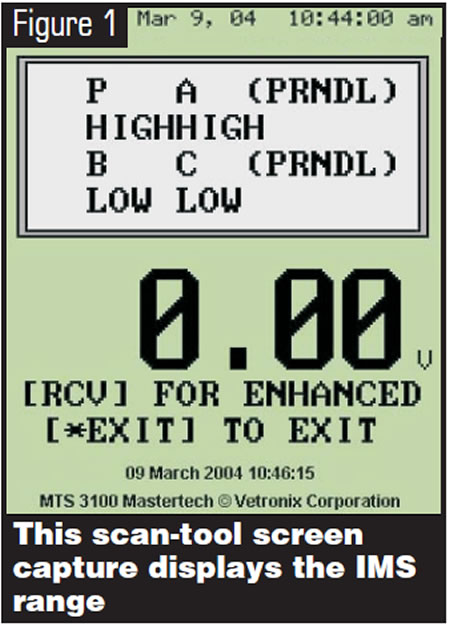
The chart in Figure 2 shows the correct ranging for the IMS, which can be seen on the scan-tool data list.
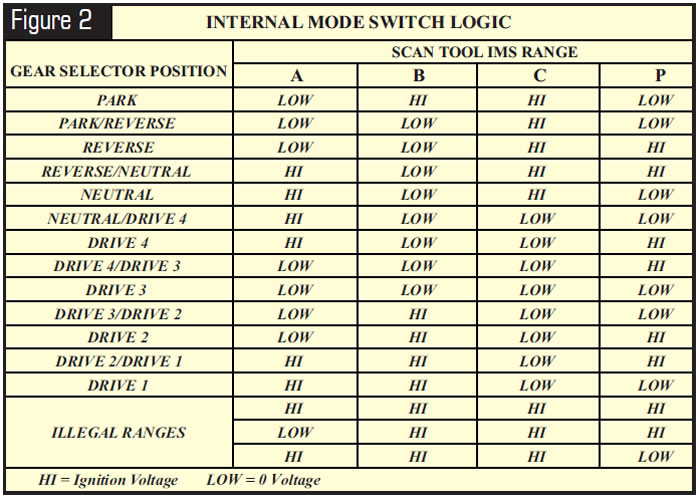
The Vetronix Mastertech scan tool and Techview program were used to acquire the screen capture. This was a relatively late-model car, so the park/neutral switch was under the transmission side cover. This switch is known as the internal mode switch (IMS). However, this IMS performs the same functions as the previous external park/neutral switch and therefore is checked in exactly the same manner.
So, what’s the next step? Well, we could use the following diagnostic procedure, which is to unplug the transmission-case connector and see whether all four circuits that tell the PCM the position of the shift lever have battery voltage.
Then ground each of these circuits, one at a time, while observing them on your scan-tool data list, to see whether they change from battery voltage to zero volts. This indicates to you that all is well from the transmission-case connector to the PCM and that the PCM internal P/N-switch decoder also is operating correctly.
Figure 3 shows the IMS circuits as checked through the transmission-case connector. Figure 4 shows the IMS circuits as checked at the PCM terminals.
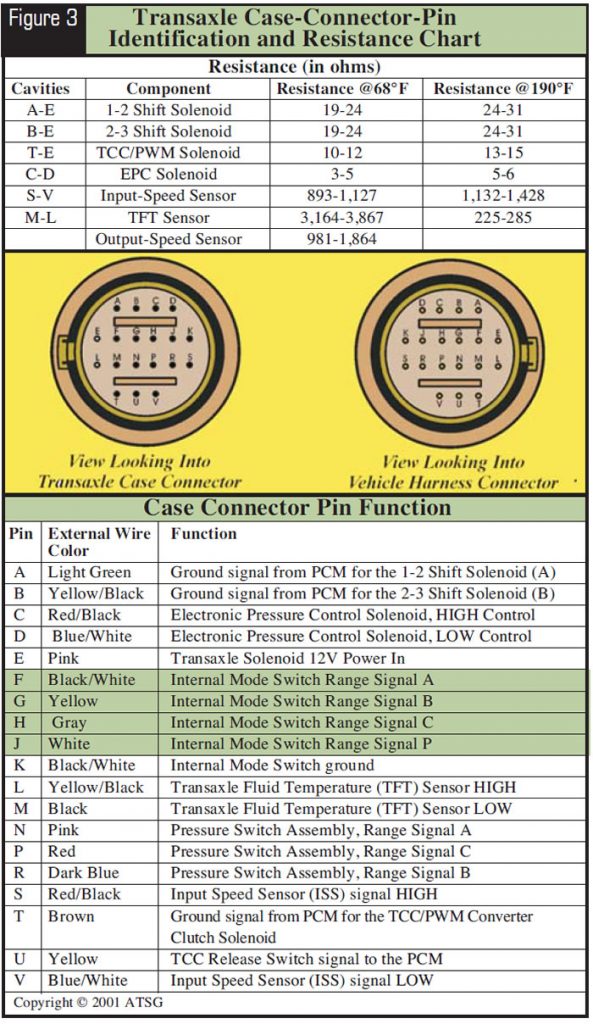
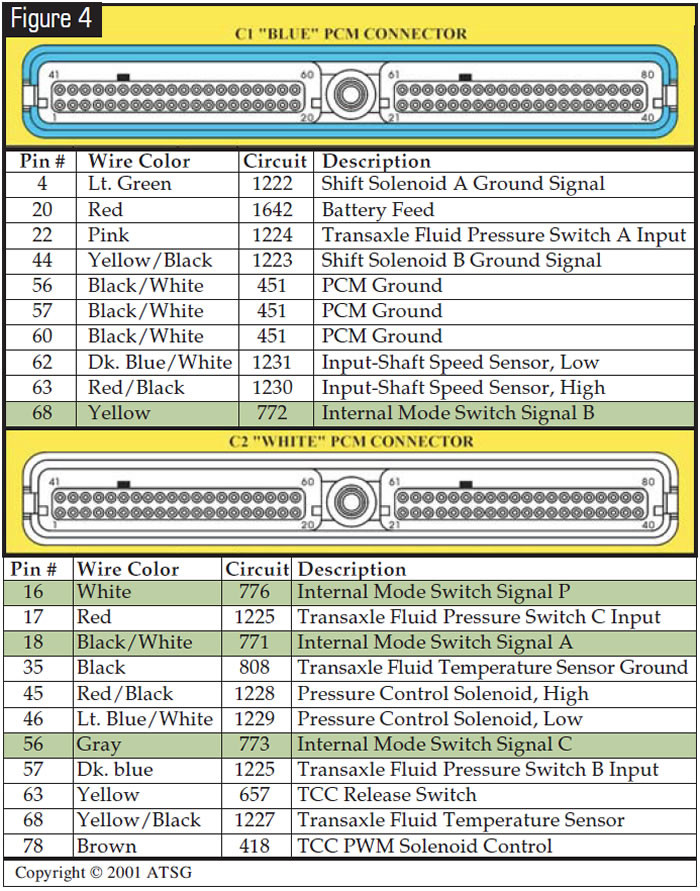
Well, that brings us to the IMS and what’s behind the complaints mentioned. When the technician removed the transmission side cover, he was looking at the same thing you are looking at in Figure 5. The reason isn’t really obvious, but you can move the IMS across the detent lever for a quarter of an inch in either direction.
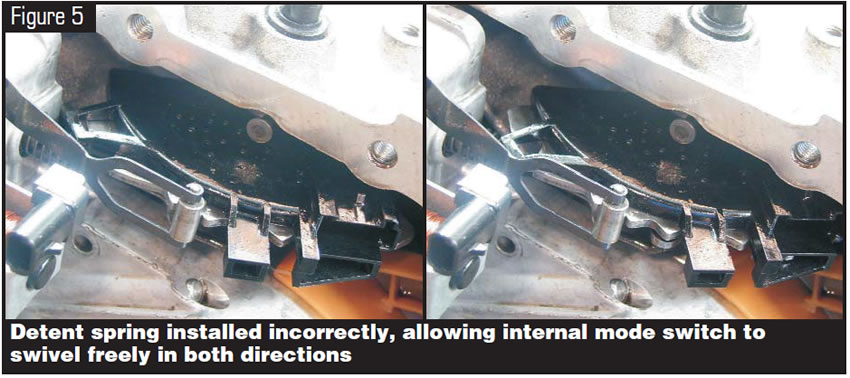
This will not allow the IMS to move in sync with the detent lever. It’s no wonder that the car would not start where it’s supposed to or range correctly. Something has to keep the IMS indexed. We will solve the mystery by looking at Figure 6. There it is – it’s the detent spring that indexes the IMS to the detent lever! Once the detent spring was placed in that position, the car started in park and neutral only, and the transmission shifted through the gears properly.
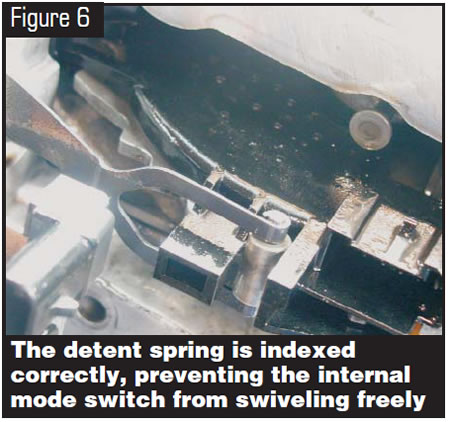
I looked at a transmission that had the IMS indexed incorrectly, and believe me, I had to look at this a few times before I realized what the deal was, and it’s easy to get it wrong. Oh, by the way, late-model 4T80-E’s use this same arrangement.














